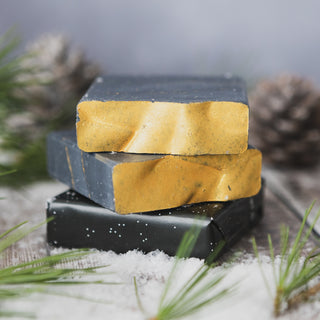Soap, an everyday necessity, has a surprisingly rich and textured history. Among the many methods used to craft this essential item, cold-process soap making stands out for its simplicity, artistry, and enduring appeal. Let's delve into the origins of soap making, the evolution of the cold-process method, and its place in today's world.
The Origins of Soap Making
The story of soap begins as far back as 2800 BCE in ancient Mesopotamia. Archaeological evidence suggests the Babylonians created a rudimentary soap-like substance by boiling fats with ashes—a process not unlike what we'd recognise as soap making today. Ancient Egyptians, too, were known to use a soap-like preparation for cleaning and medicinal purposes.
The word "soap" itself is thought to derive from Mount Sapo in ancient Rome. Legend has it that rainwater mixed with animal fats and ash from sacrificial fires ran down the slopes of the mountain, creating a crude cleansing substance. Whether myth or fact, this story underscores the long-standing link between soap and natural, handmade processes.
The Evolution of Cold-Process Soap
While many early soaps were made through boiling, the cold-process method emerged as a refined and resourceful technique. By the 13th century, soap making was gaining prominence across Europe, particularly in regions such as Marseille, France, and Castile, Spain. These areas were renowned for their high-quality olive oil, a crucial ingredient in traditional cold-process soaps.
The cold-process method involves mixing oils or fats with lye (sodium hydroxide), which triggers a chemical reaction known as saponification. Unlike "hot-process" soap making, which involves cooking the mixture, cold-process soap is poured into moulds and left to cure naturally over several weeks. This gentle, hands-off approach preserves the beneficial properties of the oils, resulting in a product that's both nourishing and mild on the skin.
The Renaissance of Artisan Soap
During the industrial revolution, commercial soap production largely replaced traditional methods, introducing cheaper, mass-produced alternatives. Yet in recent decades, cold-process soap making has seen a remarkable resurgence, championed by artisans, small businesses, and sustainability enthusiasts.
This renaissance can be attributed to a desire for products that are natural, eco-friendly, and tailored to individual preferences. Cold-process soap makers experiment with an array of luxurious ingredients, from shea butter to essential oils and botanicals, creating bespoke bars that are as beautiful as they are functional.
Why Cold-Process Soap Endures
The timeless appeal of cold-process soap lies in its artisanal nature. Each bar tells a story, crafted with care and imbued with personality. Moreover, its sustainable and chemical-free credentials align with the growing demand for ethical consumer products.
For hobbyists and professionals alike, cold-process soap making is more than just a craft; it's a form of self-expression. It's no wonder this ancient method continues to captivate creators and customers alike.
With its deep historical roots and modern relevance, cold-process soap making is a testament to the enduring power of tradition. Whether you're a seasoned soap maker or simply an admirer of the art, there's something magical about this centuries-old craft.

